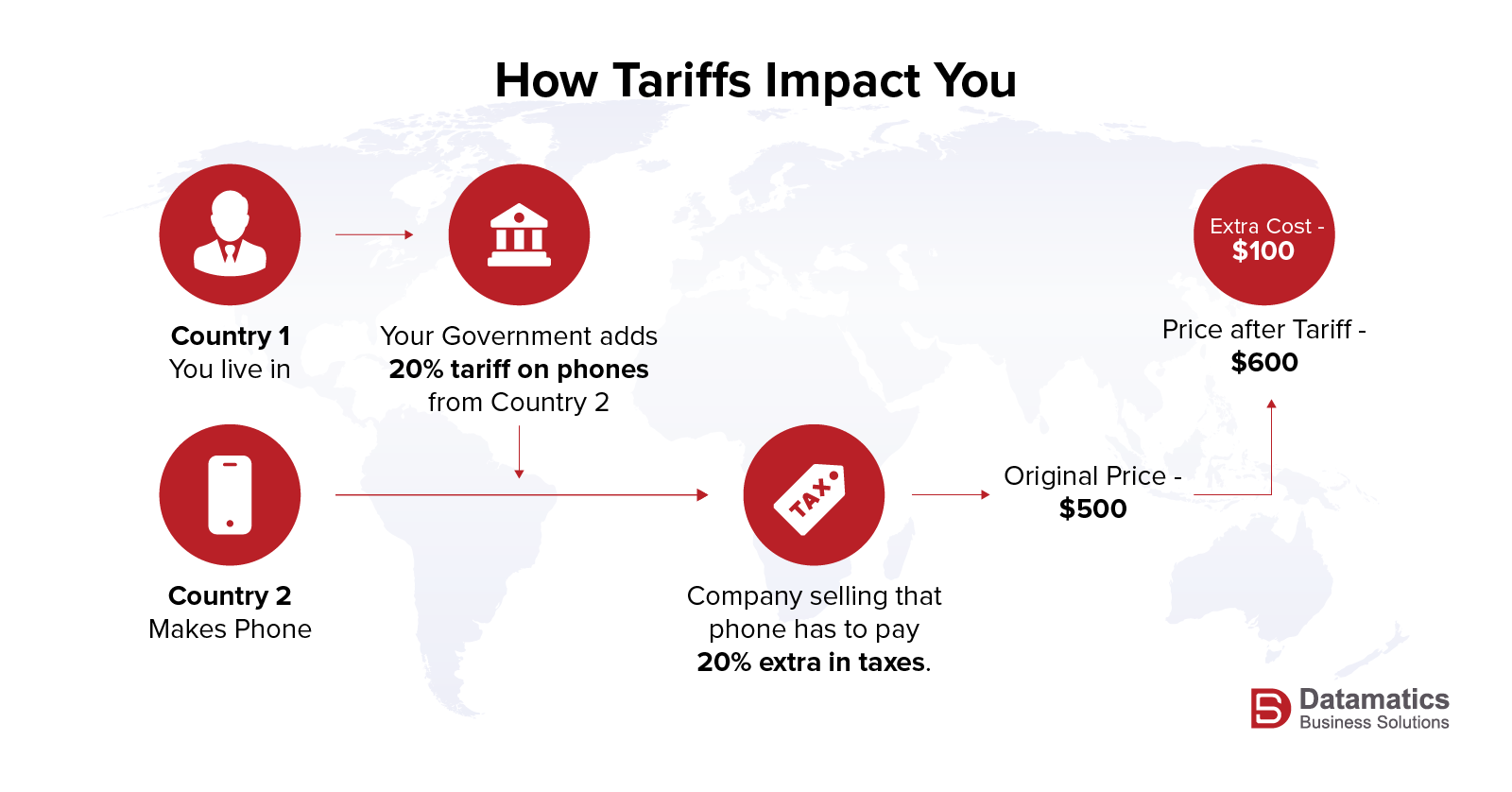Tariffs have long been a part of global trade policy. They have shaped economies, protected industries, and at times, stirred controversy. Throughout history, tariff has been used as a tool to generate government revenue or protect domestic markets. However, modern-day tariffs tell a different story. Today, tariffs are more complex and have a far-reaching role.
Between 1789 to 1913, some of the world’s strongest economies relied heavily on tariffs to fund their governments and encourage industrial self-sufficiency. But protectionist policies have not always produced positive outcomes.
Today, the resurgence of tariffs in global trade has reignited debates among economists, policymakers, and business leaders. According to the World Bank, global trade growth fell from 5.7% in 2021 to just 1.7% in 2023—due in part to rising protectionist measures and disruptions in global supply chains. As countries move to secure domestic industries, businesses operating internationally are left to navigate the unpredictable consequences of fluctuating trade policies.
The ripple effects are tangible. Rising production costs, disrupted supply chains, and delayed go-to-market strategies are now common challenges. In this volatile landscape, companies must rethink how and where they do business.
This blog explores the broader implications of shifting tariff and trade policies on global businesses and offers actionable strategies to adapt. We will also discuss how Datamatics can serve as a valuable partner—guiding businesses through market research, data-driven decisions, demand generation and content syndication to thrive in a rapidly evolving global market.
But First, What is a Tariff?
A tariff is basically a tax that a government puts on goods coming into the country from somewhere else.
 Select an element to maximize. Press ESC to cancel.
Select an element to maximize. Press ESC to cancel. Select an element to maximize. Press ESC to cancel.
Select an element to maximize. Press ESC to cancel.- To protect local businesses – If phones made in country 1 are $600, and country 2 is $500, people will buy the cheaper one. But if a $100 tariff is added to the phones from country 2 both cost the same—and now country 1 companies can also compete.
- To raise money for the government – The extra money paid as tariffs goes into government revenue.
- To pressure other countries – Sometimes countries use tariffs to push other nations to change their behavior, like following trade rules or stopping unfair practices.
Understanding the Impact of Tariffs on Global Businesses
Tariffs are those protectionist measures that can bolster the manufacturing industry and has far-reaching consequences for businesses operating in an increasingly globalized economy.
Many economists expressed concerns that levying tariffs would lead to higher consumer prices and negatively affect the global economy.
Companies that had established multi-country supply chains over the years are in the greatest risks. When tariffs are levied, Input costs surge, production timelines disrupt, and retaliatory tariffs from other nations create uncertainty across markets. For instance, manufacturers dependent on imported components are facing higher costs, which either are squeezing profit margins or passing prices onto customers—often at the expense of competitiveness.
With the current tariff war, significant volatility has creeped into the stock market as well. Rapid market swings with uncertainty about economic growth and corporate earnings are fueling investor anxiety. Sectors reliant on international trade, especially the manufacturing and tech industries, are taking the blow.
Global markets mirrored this volatility, reflecting the interconnected nature of the economy. Fears of a trade war and economic slowdown intensified, impacting investor sentiment. While the long-term effects are debated, tariffs are undeniably creating a period of heightened market uncertainty and fluctuation.
The COVID Disruption
The COVID-19 pandemic caused one of the most significant global economic disruptions in recent history. It led to widespread supply chain breakdowns, factory shutdowns, and labor shortages, particularly in manufacturing hubs like China, India, and Southeast Asia. As countries locked down, demand for certain goods (like electronics and home essentials) surged, while others plummeted. Shipping delays, port congestion, and raw material shortages exposed the fragility of global supply chains.
Businesses faced increased costs, uncertain timelines, and shifting consumer behavior. Many
companies were forced to rethink their sourcing strategies, invest in digital transformation, and explore regional or nearshore alternatives to reduce risk. The pandemic accelerated trends like e-commerce growth, remote work, and the need for agile, data-driven operations across industries.
In short, COVID-19 didn’t just cause temporary disruption—it reshaped how global business is done, pushing resilience, diversification, and digitalization to the forefront.
How Datamatics Supports Businesses in a Shifting Trade Landscape?
In a world of rising trade barriers and shifting global dynamics, companies can no longer afford to operate on assumptions. Success today hinges on making smart, data-backed decisions about where to do business—and how to do it right.
Tariffs have disrupted the world. Companies are looking for new markets. And as new markets emerge, finding the right footing can be challenging—uncertainty is high, and the risks even higher.
This is where Datamatics becomes a critical partner. We don’t just support your expansion. We do the heavy lifting to help you break into new markets with confidence.
Whether you’re exploring fresh opportunities due to the tariff disruptions, looking to relocate operations, or simply targeting high-growth regions, Datamatics helps you chart the course from discovery to dominance.
We start by identifying the right markets for your business. Our market research and Total Addressable Market (TAM) analysis provide clarity on not just where your potential lies, but how big it really is. Using a combination of AI-driven insights and human intelligence, we can help you uncover tariff-friendly geographies, forecast market trends, assess competitive landscapes, and map growth potential. And all of this can be customized to your industry.
But market discovery is just the beginning. With Datamatics, you also get a tailored Go-To-Market (GTM) strategy that aligns your value proposition with the market’s demand. We help you identify the right audience, craft a compelling positioning strategy, and determine the best channels and messaging to activate your presence—efficiently and effectively.
From there, we help you accelerate growth with our AI/ML-powered demand generation solutions. We segment your ideal customer profiles (ICPs), pinpoint key decision-makers, and engage them with hyper-targeted campaigns that convert. Our data solutions ensure you’re not only reaching the right people but doing so with verified, high-quality data that drives action.
Accurate data is the foundation of every successful GTM motion. That’s why we pair our marketing expertise with clean, compliant, and actionable data that is vetted through both AI and human validation. When your data is solid, your decisions are sharper—and your market entry strategy becomes far more effective.
Finally, we bring it all together with high-precision demand generation, content syndication, and Account-Based Marketing (ABM). Our ABM approach enables you to go deeper into key accounts with personalized outreach, aligning sales and marketing to drive faster conversions and higher deal values.
At Datamatics, we don’t just help you enter new markets. We help you own them—with intelligence, strategy, and speed.
What’s Next?
We don’t know. We’re in a state of uncertainty. As the strongest economies in the world engage in tariffs showdowns, the future of global trade remains unpredictable.
But in times like these, being prepared is a competitive advantage. When the rules are shifting, clarity is power.
At Datamatics, we help businesses navigate uncertainty with confidence. By combining global data intelligence with targeted outreach strategies, we empower organizations to remain agile, informed, and resilient—regardless of what trade disruption comes next.
Let’s explore how we can future-proof your growth strategy. Get in touch and let’s chart the course—together.
Subscribe to our blogs and always stay on top of industry trends.

Somnath Banerjee



